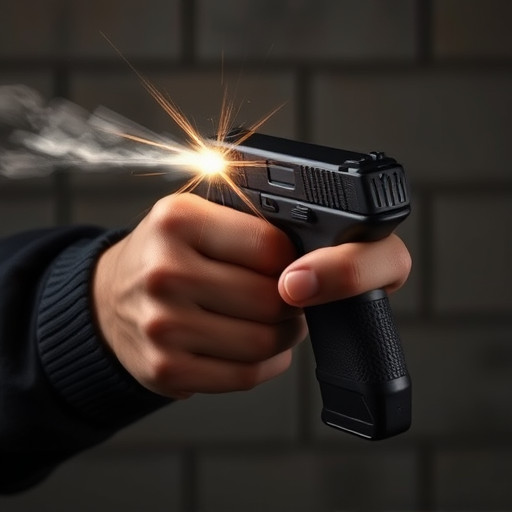Stun guns (electronic control devices or ECDs) use high-voltage, low-amperage electric pulses to temporarily disable attackers, offering valuable non-lethal self-defense. While proven effective in close-quarters combat and real-life incidents against muggers and animals, success rates vary based on attacker's body type, weather conditions, and stun gun model. This article explores the realistic impact and reliability of stun guns in various scenarios, providing insights into their true effectiveness as a self-defense mechanism for informed users.
Are stun guns effective in self-defense? This question has sparked debates, especially with varying opinions on their mechanism and real-world usability. This article aims to provide a comprehensive overview of stun gun effectiveness, delving into the science behind their operation and exploring success stories from law enforcement and civilians alike. We’ll also dissect legal considerations and scenarios where stun guns might not live up to expectations, shedding light on both sides for informed decision-making regarding personal safety.
Understanding Stun Gun Mechanism and Its Basic Effectiveness
Stun guns, also known as electronic control devices (ECDs), operate on a simple yet powerful principle. They use an electric current to disrupt muscle control in the body, causing temporary incapacitation. When activated, a stun gun emits a high-voltage, low-amperage electrical pulse that affects the nervous system and neuromuscular junctions. This disruption leads to a range of effects, including muscle spasms, disorientation, and loss of balance—all occurring within fractions of a second.
The effectiveness of a stun gun lies in its ability to deliver a powerful shock with minimal physical contact. Unlike traditional weapons that rely on force or projectiles, stun guns disable through electrical impulsiveness. This makes them particularly useful for self-defense situations, as they can provide a non-lethal response against potential attackers. Studies and real-world accounts support their basic effectiveness in incapacitating assailants, offering individuals an additional layer of personal safety.
Real-World Applications and Success Stories: When Do Stun Guns Work Best?
In real-world scenarios, stun guns have proven effective in self-defense situations, particularly in close-quarters combat. Their primary advantage lies in incapacitating an assailant temporarily, giving the user time to escape or seek help. The stun gun’s electric current disrupts the muscle control of the nervous system, leading to a loss of balance and consciousness for several minutes. This makes it a powerful tool against attackers, especially those with strength or aggression advantages.
Success stories often involve individuals who have used stun guns to defend themselves from muggers, home invaders, or even animal attacks. The devices’ effectiveness is most notable in situations where the user needs only enough time to get away safely. However, it’s important to note that factors like the assailant’s body type, weather conditions, and the specific model of stun gun can influence its overall success rate.
